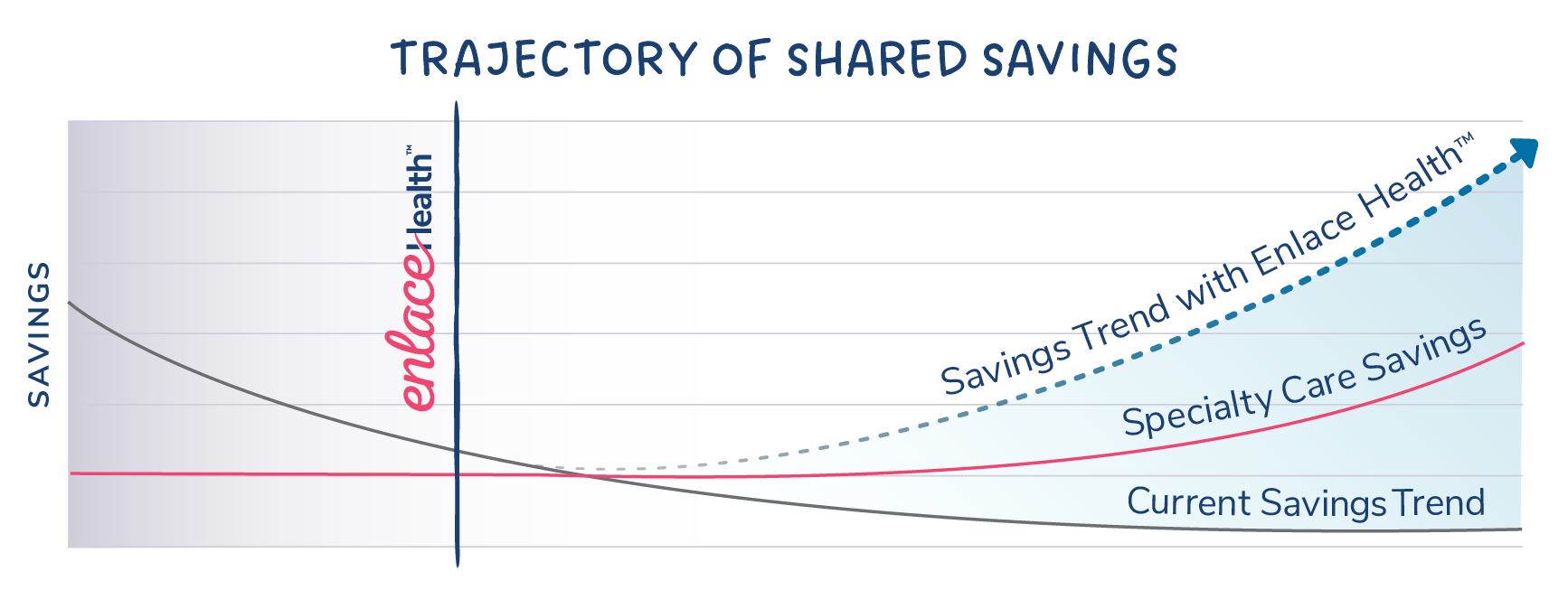Changing the Healthcare Cost Trajectory Through Specialty Care
This article is one in a series that advocates the need to bring specialty care under value-based care payment models. Click here to read the previous article, Fixing the U.S. Healthcare System: Government Needs to Push the Private Sector.
Realizing the benefits of value-based care. It’s time to do what’s right, not what’s easy.
Doing the right thing – incentivizing quality healthcare outcomes instead of volume – is a compelling proposition. It’s difficult to argue with the logic behind VBC.
So why hasn’t VBC gained more traction? The reason is simple: doing value-based care correctly isn’t simple, and therefore, has only been widely embraced in primary care settings. Value-based specialty care is still in its infancy.
Put VBC Incentives into All Care Settings
Until value-based care principles are broadly adopted throughout healthcare, the true advantages of VBC can’t be realized.
Here’s why, according to an article in the Harvard Business Review:
- While the majority of Primary Care physicians are incented to provide VBC services that result in optimal outcomes, PCPs deliver only 10% of care provided in the U.S. today.
- The other 90% of care is delivered by Specialists still mired in the fee-for-service payment model. As a group, specialists continue to be rewarded based on the volume of services provided.
Enlace Health™ has always been one of the forerunners in value-based care, continuously focused on solutions that change the payment and delivery models of healthcare. Enlace is now leading the next, and more important change, to VBC – connecting PCPs and Specialists in a quality-driven, cost-effective ecosystem that aligns incentives needed to truly bend the healthcare cost curve.
Value-based care has been discussed for a great deal of time, but healthcare has not addressed the real challenges preventing the broad adoption of value-based programs. We see healthcare costs continue to rise because of the inefficiencies in our system, patients are growing more frustrated with their healthcare experience, and our quality metrics are some of the lowest among wealthy countries.
The connection between PCPs and Specialists is essential to the development and growth of an efficient healthcare system:
- PCPs gain more insight, and therefore, more influence on care delivery models that can affect cost throughout an entire episode.
- Best-in-class patient care is the incentive that aligns PCPs and Specialists.
- End-to-end analytics continuously provides meaningful insights to the PCP and Specialist and ensures patients receive the best care through any episode.
Meet VBC Disparity Head-on
Changing the trajectory of shared savings enables all healthcare providers to perform better financially, while increasing overall quality.
Integrating specialty care and primary care within a unified VBC payment model is the key to driving high-quality care for less cost across the board. Industry leaders, including ZS, concur.
Effectively bending the healthcare cost curve means changing the way specialty care is delivered.
It requires addressing four areas of spend:
- Total Specialty
- Time-to-Diagnosis
- Procedural
- Best-in-Class Network
With a focus on these critical cost components, changes can happen.
The government’s done its part, giving the U.S. healthcare system the boost needed to bring value-based care into the mainstream. CMS programs such as BPCI, and CMSS and efforts by the ACA set the stage needed to replace FFS with VBC. It’s now up to the private sector to leverage the value-based foundation developed in primary care and focus on the area that will truly affect healthcare cost and quality – specialty care.
Current value-based programs, mostly implemented in primary care settings, are reaching their maximum impact. To truly change the trajectory of healthcare savings and quality, we need to employ comprehensive value-based specialty programs.

This article is one in a series that advocates the need to bring specialty care under value-based care payment models. Click here to read the next article, The Risk/Return Ratio of Value-Based Care is High, But Progress is Slow.
References:
4 Ways to Improve Specialty Health Care in the U.S.
Why specialists are the next frontier of health plans’ value-based care agenda
 ASK ENLACE
ASK ENLACE